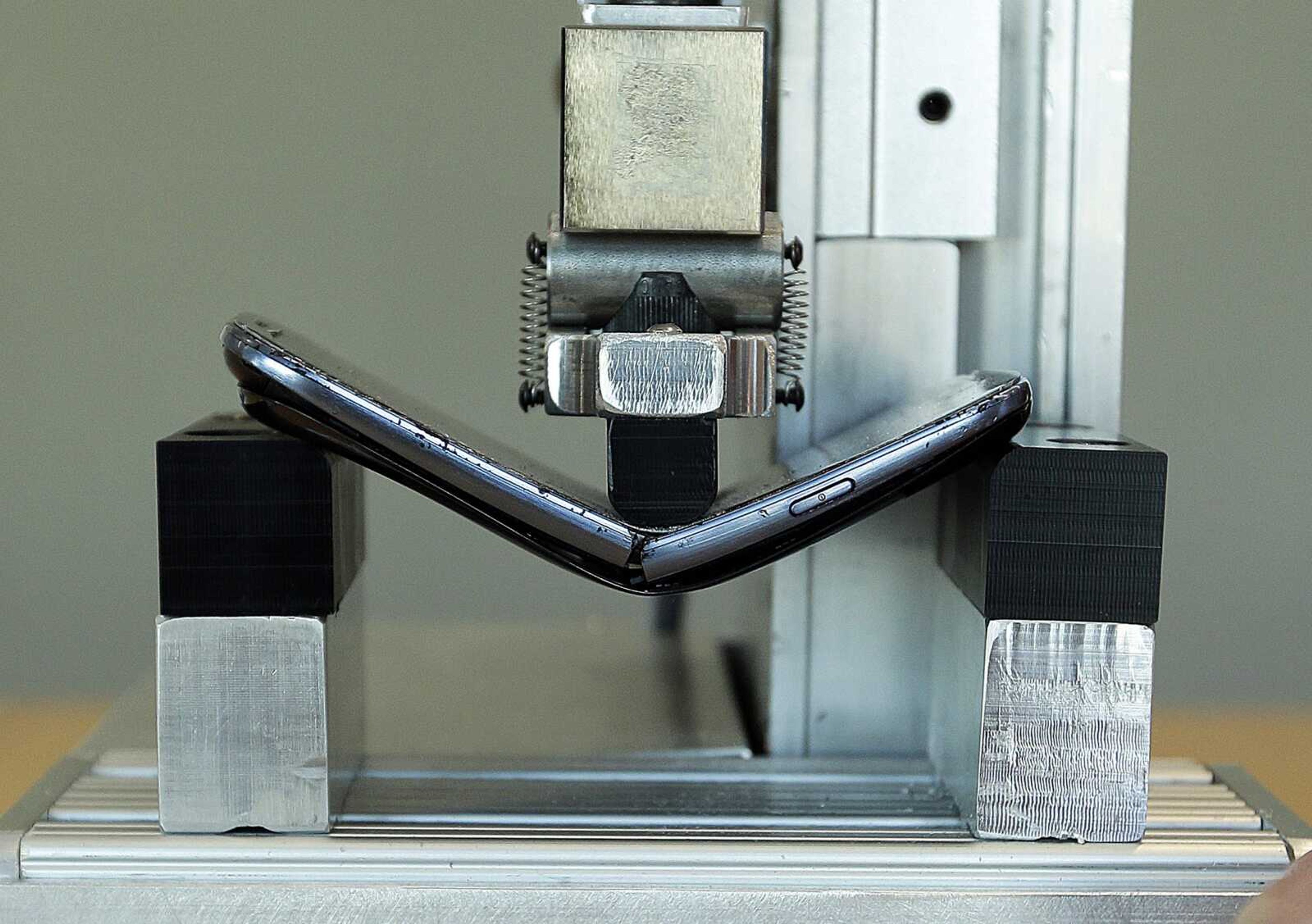Why phones break: Screens get stronger, yet we demand more
NEW YORK -- Ask a roomful of people to take out their phones, and you're bound to see several with cracked screens. Despite engineering breakthroughs, screen breakage has become a part of life, the leading type of phone damage. In part, we're to blame. We want phones that are bigger, yet thinner, offsetting strides made in strengthening glass. We also want phones to be sleek: A phone that's rugged enough to withstand drops just won't match what we expect smartphones to look and feel like...
NEW YORK -- Ask a roomful of people to take out their phones, and you're bound to see several with cracked screens.
Despite engineering breakthroughs, screen breakage has become a part of life, the leading type of phone damage.
In part, we're to blame. We want phones that are bigger, yet thinner, offsetting strides made in strengthening glass. We also want phones to be sleek: A phone that's rugged enough to withstand drops just won't match what we expect smartphones to look and feel like.
"The tradeoff is phones get a lot bigger and bulkier," said Rick Osterloh, president of phone maker Motorola. "Without a really big innovation and technological breakthrough, it's going to be hard to (make a really tough phone) in a size people expect."
That's not to say phones aren't getting stronger.
In fact, given how frequently we use phones throughout the day, juggling them as we commute, run errands and chase after small children, it's amazing screens don't crack more.
The latest phones from the two leading phone makers -- Apple's iPhone 6s and 6s Plus, and Samsung's Galaxy Note 5 and S6 Edge Plus -- mix zinc into the aluminum frames for aerospace-grade strength. The frames will absorb more of the shock that would have gone to the glass, not to mention help prevent the phones from bending in pockets.
The displays also use ion-strengthened glass. Samsung uses Corning's Gorilla Glass 4, which gets heated in a process that replaces sodium ions on the surface with potassium ions. Because potassium ions are larger, they press together to create a stronger surface -- akin to a layer of armor to protect the interior. Apple turned to Corning for a custom glass that goes through two rounds of ion exchange for greater strength.
Even some budget and mid-range phones, including Motorola's, are using strengthened glass, though made with older, weaker formulas.
With strengthened glass, you still can pierce the armor with enough pressure, but it's harder than with normal glass.
SquareTrade, which offers protection plans for consumer electronics, said while phone screens used to crack after one or two drops, the latest iPhones and the Note 5 survived 10 drops each from six feet in tests last weekend, at least when dropped on their corners. SquareTrade also said the new iPhone screens are more durable than last year's models.
But for all three new phones, the screens broke right away when dropped face-down on concrete. The stronger glass improves the odds, but the risk isn't zero.
Connect with the Southeast Missourian Newsroom:
For corrections to this story or other insights for the editor, click here. To submit a letter to the editor, click here. To learn about the Southeast Missourian’s AI Policy, click here.








